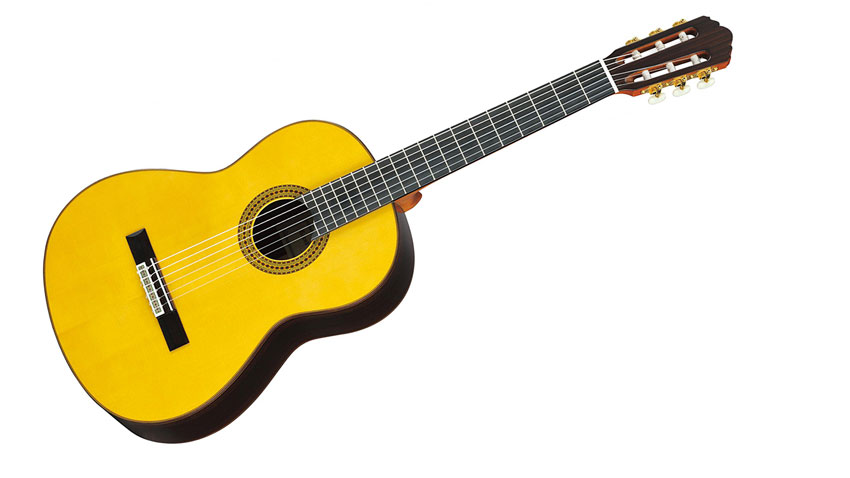MusicRadar Verdict
If you're a serious student, or just like to dabble with the classic repertoire but on a quality instrument, this is a good place to start. Yamaha's excellent consistency is what makes the brand so easy to recommend, and this GC22S is a fine example of serious factory craft.
Pros
- +
Heritage. Build. Spacious tone.
Cons
- -
Slightly cramped string spacing at nut.
MusicRadar's got your back
Yamaha started out making classical guitars in the 60s, and utilised the expertise of Spanish makers like Eduardo Ferrer and later Manuel Hernandez, along with players like Segovia, Baden Powell and Paco de Lucía.
"Originally, the Grand Concert (GC) guitars were just handmade in Japan in very small numbers. However, the GC22 is factory-made in China, and therefore highly affordable in comparison"
Originally, the Grand Concert (GC) guitars were just handmade in Japan in very small numbers. While that's still the case, the start point of Yamaha's new 2012 GC range, the GC12 (£748), the reviewed GC22 and the GC32 (£1,697) are factory-made in China, and therefore highly affordable in comparison to the top-of-the range model, the GC82 - a cool £9,987.
The spruce-topped and lightweight GC22S is an attractive piece: it's all solid, with rosewood back and sides, mahogany neck and ebony fingerboard. It's gloss finished, too, with a colourful Spanish-style rosette.
Internally, it's cleanly constructed, with a dovetail neck joint, not a typical Spanish slipper heel. Scale length is 650mm (25.59 inches), nut width 52mm (2.05 inches), and the flat fingerboard is devoid of markers, face or side.
Sounds
If you're used to a nylon-string electro, the higher 'classical' action takes some adjustment, but the overall tone is balanced, big and spacious with deep bass and strong trebles. In a few weeks, it's definitely opened out sound-wise; regular playing will increase that.
Dave Burrluck is one of the world’s most experienced guitar journalists, who started writing back in the '80s for International Musician and Recording World, co-founded The Guitar Magazine and has been the Gear Reviews Editor of Guitarist magazine for the past two decades. Along the way, Dave has been the sole author of The PRS Guitar Book and The Player's Guide to Guitar Maintenance as well as contributing to numerous other books on the electric guitar. Dave is an active gigging and recording musician and still finds time to make, repair and mod guitars, not least for Guitarist’s The Mod Squad.
“Instead of labouring over a perfect recreation, we decided to make an expanded counterpart”: Chase Bliss teams up with Mike Piera for Analog Man collab based on the legendary King Of Tone
“It’s about delivering the most in-demand mods straight from the factory”: Fender hot-rods itself as the Player II Modified Series rolls out the upgrades – and it got IDLES to demo them
“For some reason, the post office shipped your guitar to Jim Root of Slipknot”: Sweetwater mailed a metal fan's Jackson guitar to a metal legend











